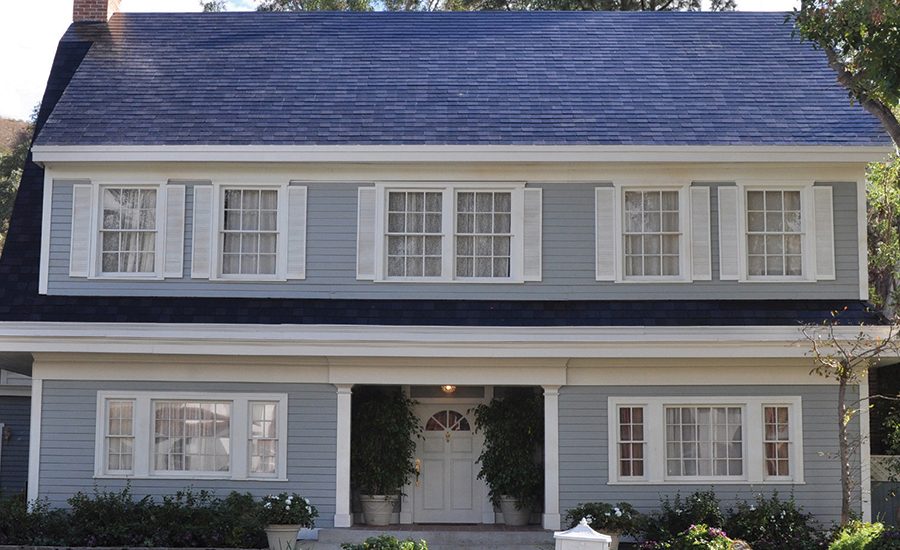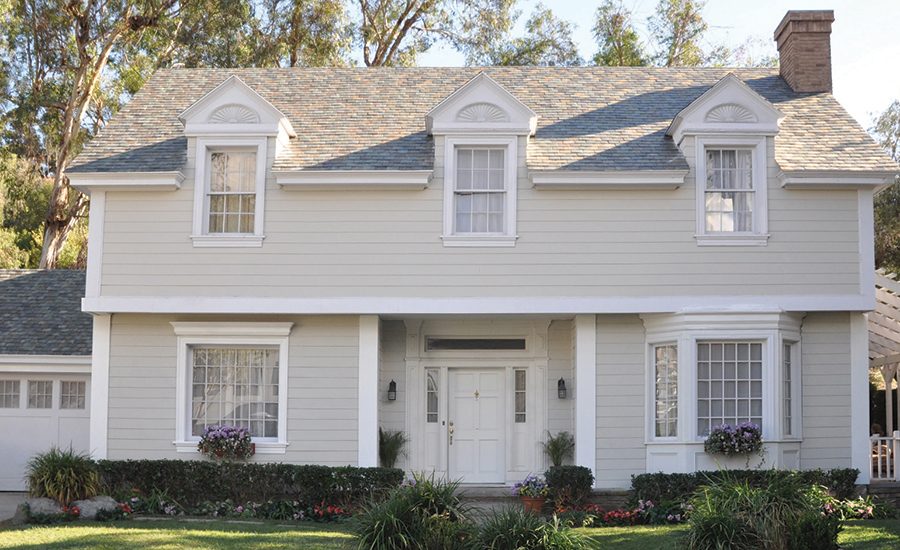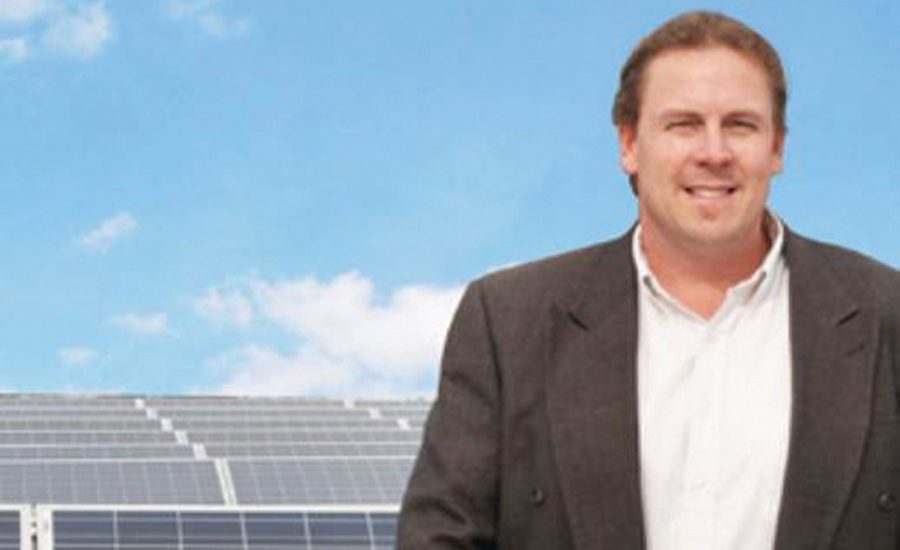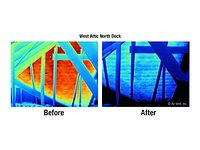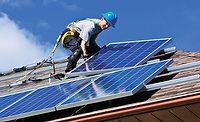SolarCity and Tesla’s latest announcement for a solar roof sure did grab a lot of headlines and get us all talking about the prospects of an integrated solar shingle. I would venture to say most of us involved with solar believe the industry will head this way eventually. Taking advantage of a wasted roof surface that constantly gets sunlight and turning it into usable, renewable energy with an integrated product that doesn’t sacrifice waterproofing or longevity will probably be the rule instead of the exception someday.
The question is, ‘Are we there yet?’
Did Tesla CEO Elon Musk just break that barrier and get us there sooner than we anticipated? This isn’t the first time solar shingles have come to the market, so those of us in the industry react a little cautiously.
Previous attempts into this market include companies like General Electric, CertainTeed and Dow Chemical. Dow launched the Powerhouse Shingle in 2011 after many years of research and development.
Though silicon is the product of choice for solar cells throughout the market, Dow went with a semiconductor material combination known as CIGS (Copper Indium Gallium (di)Selenide) which mimics the properties of silicon cells to produce electricity. Unfortunately, they couldn’t predict the drop in costs for silicon — fueled largely by Chinese manufactures — that’s still continuing to drive typical crystalline solar panel costs to record lows. Silicon is the 2nd most abundant element on the planet, and with its plummeting prices there is no expectation that it would be replaced as the primary ingredient in solar panels in the next 15-20 years.
Fueling Demand
In July, Dow shuttered its solar shingle facility due to lack of demand. Now don’t be confused, that wasn’t a lack of demand for solar. Solar has had a “Compound annual growth rate of nearly 60 percent” according to the Solar Energy Industries Association. Solar also employed more than 209,000 workers in 2015, surpassing oil and gas extraction, and by 2020 is expected to increase to 420,000 nationally. It also represents 26 percent of all newly installed electric capacity in our country. The ‘demand’… is high.
Another well-known brand name in the roofing industry, CertainTeed, also dabbles in this market with the Apollo solar shingle. Looking more like a small solar panel and less like an asphalt shingle, CertainTeed incorporates silicon cells into these just over 4sf mini-modules that sit flush to the roof.
With an underlayment of ice and water shield, the Apollo replaces the need for traditional shingles in those flat open areas between hips and valleys. But certainly no one would mistake them for shingles, and they produce less than traditional panels that can exceed 20 percent efficiency. But for those willing to trade energy production for aesthetics, the Apollo is an improvement.
Tesla’s new product line seems to bridge the gap that these previous competitors couldn’t, making solar aesthetically pleasing and generally conspicuous to the fact that they are generating renewable energy. Did they accomplish this? The facts of the case are still out, since Tesla hasn’t released the specifications of the system yet. What you can see from the announcement was a single silicon cell inside of each ‘shingle.’
Practical Application?
The question arises that if you make the silicon cell ‘less visible’ with colors, films and textured surfaces, doesn’t that make it less visible to the sun, and thus less efficient? In his announcement, Musk explained how the cells wouldn’t be visible from the street, but completely visible to the sun. However, the sun stretches from our eastern horizon to directly overhead, to the western horizon at multiple angles throughout the year. Which angles will be adversely affected by the attempt to ‘conceal’ the solar generation aspect of this shingle?
Again, we’ll have to wait until Musk releases more information. But in general terms, any condition that blocks a silicon cell from being visible from multiple angles will lower its overall energy production. That is simple physics and you just can’t get away from that, or engineer it away.
There are several other questions I had, including: How to maintain safety setbacks from the roof edge and ridge required by international fire codes? If the entire roof is a solar panel, where is the safe zone for firefighters to gain access and vent the roof for smoke so they can save people inside a burning home?
The wiring of a solar shingle is also curious as a typical solar panel has 60-cells in each module. That’s about 16 fairly simple plug-n-play connections for the average home. How do you wire and connect ‘one-cell’ shingles at a time? Will that require a hole in your substrate for every shingle in the roof for wiring?
Shading is also a common concern with most residential solar arrays. Installers use micro-inverters and optimizers to mitigate shading so that one solar panel shaded by a tree or even a dormer doesn’t reduce the other solar panels in the same circuit. These kinds of devices are typically placed under each solar panel, but will there be room for that in a solar shingle roof?
Shade on any one shingle can have a lingering effect on the rest of the circuit reducing the overall energy production.
Like many ‘latest and greatest’ technological announcements, Musk’s solar roof leaves us with more questions than answers. And until they release any specifications, we’ll reserve judgement on the technology. But I wonder if a $60 billion company like Dow Chemical or CertainTeed, part of the multi-national Saint Gobain, can’t make something of the ‘solar shingle,’ how can a $4 billion company that hasn’t turned a profit yet pull it off?
Well, Tesla has been a proven innovator in their field, famous for reimagining and reinventing their industry. If the solar shingle is to really take off, it will most certainly require some innovation to make it not only aesthetically pleasing but safe, simple, affordable and cost effective compared to fossil fuels.
For the time being, it may be easier for the average consumer to look at a standard silicon solar panel, and say, “You know, that doesn’t look so bad.”
See also: Scalo Solar Solutions, a part of 2015's Roofing Contractor of the Year

